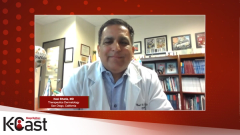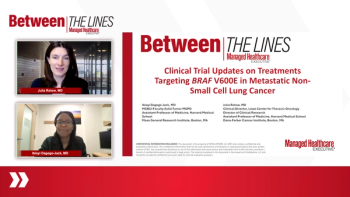
Diagnosing Severe Atopic Dermatitis
Neal Bhatia, MD, provides an overview of atopic dermatitis (AD) and the diagnostic process, as well as how its severity impacts the patient.
Neal Bhatia, MD: In the dermatology clinic, the patient journey [for atopic dermatitis] has been 1 of frustration in seeking resolution, not just treating results. It’s even more so trying to get some relief from itch, which is obviously the biggest symptom complex that goes along with their disease. This can vary from the mildest patients, who have 2% or 3% body surface area covered, to 50% and up.
These are patients who are scratching at stoplights while waiting for it to turn green, scratching in their cubicles at work, or unable to sleep. These patients have slow or very rapid quality-of-life changes depending on the severity. They’re looking for solutions that aren’t just bandages. They’re looking for things that could be more for the long run, and things that are safe in the hands of those who can treat them. We have opportunities with topicals, injectables, and pills. There are a lot of opportunities to make atopic dermatitis a little better controlled. That’s what patients need from the beginning.
The terms atopic dermatitis and eczema are often used interchangeably. But in dermatology we think of eczema as the symptom complex—itching, the breakdown of skin, fissuring, dryness—whereas dermatitis is something more objective. It’s more of the objective findings, like spongiosis changes under the microscope, the inflammatory cascade, erythema, lichenification, excoriation, and the population that make the EASI [Eczema Area and Severity Index] score. Obviously the -itis is inflammation of the skin. Atopic is basically part of atopy. Atopy is part of the Th2 [T helper 2 cells] side of immunity that involves several cell lines.
Even more, we think of asthma to the lungs, allergic rhinitis to the nose, and atopic dermatitis to the skin as part of the atopic triad. All those tend to go either hand in hand, or there may be overlap in some patients. Atopic dermatitis as a whole isn’t something we look at and say, “There’s a flare here and there. Let’s try to manage it.” We have to think in terms of what’s under the hood, how we keep that patient from getting worse, and getting some restoration of quality of life.
There are varied presentations of atopic dermatitis—mild, moderate, and severe. When we think of moderate and severe patients who’ve probably been treated by their primary care physician or somewhere else or have tried and failed over-the-counter medications, where there’s rapidly progressing surface area, we divide moderate and severe by surface area by the [Validated] Investigator [Global] Assessment [scale] or the physician assessment when we’re in the clinic. Even more so, the EASI score is a nice objective way of looking at things.
When you think about patients who have atopic dermatitis on their face, flexural surfaces, extremities, abdomen, or trunk, 1% of the surface area of your body is your palm, so you measure that based on the number of palms. Many would say that 20% and higher is severe, and moderate is 10% to 20%. But there’s also the quality of the plaques, how bad they are in terms of periorbital change, how much itching is involved, the amount of excoriation, and even more so the distribution that goes along with the objective change. Then you throw in the subjective impact of itching and poor sleep, the inability to take off your shirt and hold hands. We have a lot of patients with atopic dermatitis who don’t want to go swimming because they know it hurts. They have issues with showering and bathing. Even more so, there’s the patient who can’t look you in the eye because they’re so fatigued from their disease that they can’t concentrate at school or at work because they can’t sleep. This is where severity has a different kind of impact as well.
This transcript has been edited for clarity.
Newsletter
Get the latest industry news, event updates, and more from Managed healthcare Executive.






















































